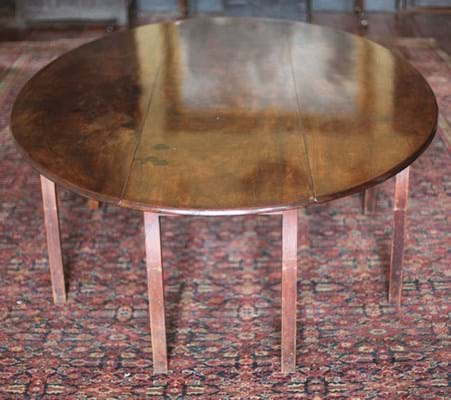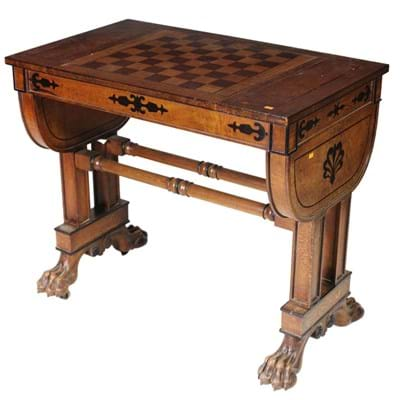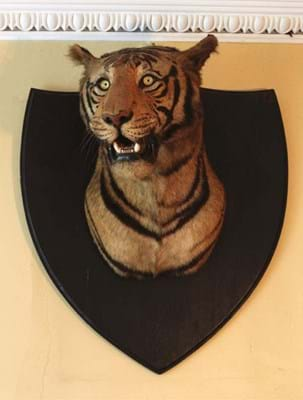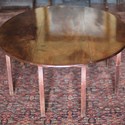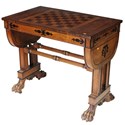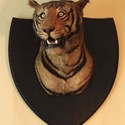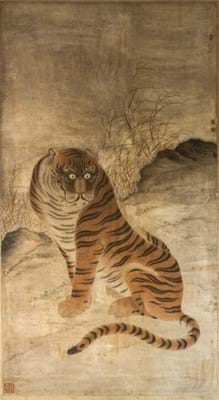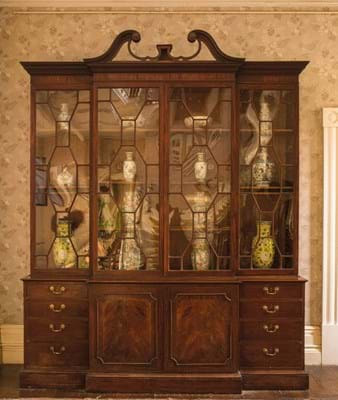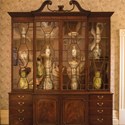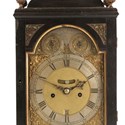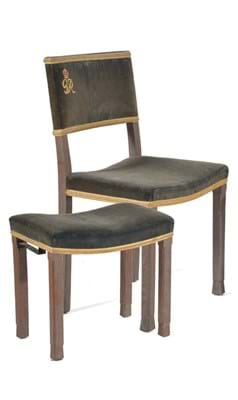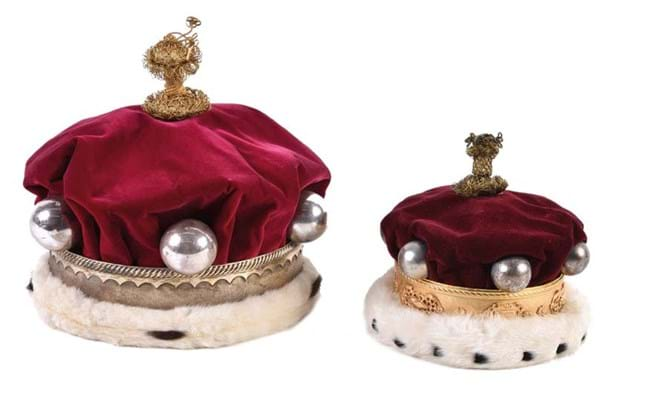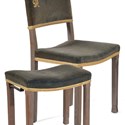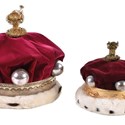While these may lack the romance of sales at ‘the big house’, they do produce the goods and, more often than not, the results. Three such sales recently were good examples.
Duke’s (25% buyer’s premium), the Dorchester auction house which has an old-fashioned on-the-premises sale scheduled for later in the year at Athelhampton House (ATG No 2388), sold the contents of Moigne Combe, Dorset on April 10 – notching up £360,000.
At Newbury on May 1, Dreweatts (25% buyer’s premium) had a 243-lot sale of the contents of Oakley House, Suffolk which enjoyed a 96% selling rate and a £578,000 hammer total.
Co Kilkenny auction house Fonsie Mealy (22% buyer’s premium inc VAT) has a slightly different policy of moving contents of Irish country houses to a central location rather than its Castlecomer base.
On April 16 the firm sold the contents of Fortgranite, the Baltinglass, Co Wicklow home of the Dennis family, at a hotel in Tullow, Co Carlow.
Steeped in family history
A long tradition exists in Ireland of adding other items from other sources to such sales but here more than 90% of the 856 lots were from Fortgranite and accounted for almost all the better sellers on a day when 95% of the offerings sold to a hammer totel of €660,000 (£580,000).
Steeped in family history, the elaborately decorated Dennis charger (ATG No 2390) led the silver at €12,000 (£10,440), selling to one of the many Irish private buyers.
Paintings were a major factor in the sale’s success (also see Art Market, p20) but keen interest in furniture was also evident.
Particular favourites were two George III mahogany hunting tables. These used to be known as wake tables, the idea being that the coffin was laid on the long central rectangular top with drinks on the folding leaves.
However, given the enthusiasm with which foxes used to be pursued across Irish estates by the landed gentry, the title ‘hunt table’ may be more correct.
One was an early example unusually large at 9ft 6in long x 5ft wide (2.89 x 1.53m) and with elliptical double drop leaves. Raised on eight chamfered legs, it was catalogued as rare and fine and, against a €2000- 4000 estimate, sold at €11,000 (£9570).
This was a decent price but one eclipsed by the second hunt table which had especially fine colour and surface patina. The 8ft long x 3ft 3in wide (2.89 x 1.53m) table was pitched at €5000-7000 and made €25,000 (£21,750).
Also popular was a Regency walnut and ebony-inlaid inlaid games compendium in the manner of George Bullock.
The 2ft 10 x 20in (86 x 51cm) top featured a central reversible chequer flanked by two compartments with sliding tops, and against a €800-1200 estimate it sold at £6400 (£5570).
Other furniture lots to go well above estimates included a set of 14 George III, Hepplewhite-style and period dining chairs featuring a pair of carvers at €10,000 (£8700) and a 19th century oak-framed day bed/chair by the solidly popular London maker Howard & Son at a triple-estimate €2870 (£3300).
No country house sale seems complete without trophy taxidermy and Fortgranite supplied a classic example: the head of a snarling tiger mounted by the finest taxidermy firm in India, Van Ingen & Van Ingen. It went at €8000 (£6960), 10 times the lower estimate.
Going at 10 times the top estimate was the only high-priced seller to leave Ireland. This was an early 19th century Chinese cinnabar lacquered shaped box. Decorated to the 6in (15cm) diameter lid with dragons in waves it sold, unsurprisingly, back to China, at €7200 (£6260).
Duke’s Moigne Combe
At one level, Duke’s Moigne Combe sale had very much the look of an everything-must-go country house sale right down to pieces from the garden and nondescript furniture given low three-figure and two-figure estimates.
Brightest star by a distance was the George I walnut bookcase which doubled the healthy top estimate to contribute £120,000 (see ATG No 2388) to the £360,000 hammer total. It was lacking a giltwood crest – one that will have to be remade – but was exceptional quality.
The London cabinet makers Peter Miller, Giles Grendey or John Belchier were suggested as candidates for its manufacture – with Belchier perhaps the favourite. The buyer was from the London trade.
A mahogany bookcase from the early George III period could well have taken the top slot in many a sale. In the manner of Thomas Chippendale (the drawer construction was similar to that found on pieces attributable to his workshop), it was a large example at 10ft tall x 8ft 1in wide (3.05 x 2.46m) but a standard form with pierced swan-neck pediment, astragal glazed doors and a base of cupboard doors flanked by four graduated cockbeaded drawers.
Breathing quality, and boasting a lustrous patina and good colour it sold at its top estimate of £20,000. It went to an agent in the room acting for a private buyer.
Best of the horology was a c.1755 mahogany cased bracket clock signed to the silvered dial and to the backplate for Benj[amin] Gray Just[in] Vulliamy London. Measuring 15½in (39cm) high to the pineapple finial on the basket top, the clock was driven by a two-train fusee, quarter-repeating movement.
It was estimated at £3000-5000 but sold at £19,000 to a phone bidder underbid by a specialist dealer in the room.
A huge 18th-19th century watercolour of a tiger against a monochrome background of rocks and sky measuring 7ft 10½in x 3ft 7½in overall (2.4 x 1.1m), went at 10 times the top estimate to a private bidder on the phone at £5000. Although catalogued as Japanese, it was thought to be Korean.
Crowning glories
Portraits and fine art were the main draw at Dreweatts’ dispersal of the contents of Oakley House, home of the Barons of Wraxall, but there were one or two eye-catching lots which were quintessentially country house pieces with impeccable provenance.
Sustained competition developed for the London c.1929 silver-gilt coronets and robes worn by Baron and Lady Wraxall at the Coronation of George VI.
Family interest pushed this, and other lots, beyond way beyond expectations. Estimated at £1500-2500, the coronets and robes sold to a private collector at £22,500.
The 1937 Coronation also accounted for the best-selling furniture: a chair and stool in limed oak from the Westminster Abbey ceremony. The chair, with velvet upholstery, was stamped with the VI cypher and, to the underside, North & Sons, West Wycombe and to the stool, for Waring & Gillows.
Estimated at £100-200, the pair went to a collector at £6000 – far more than is normal for these popular commemoratives.


